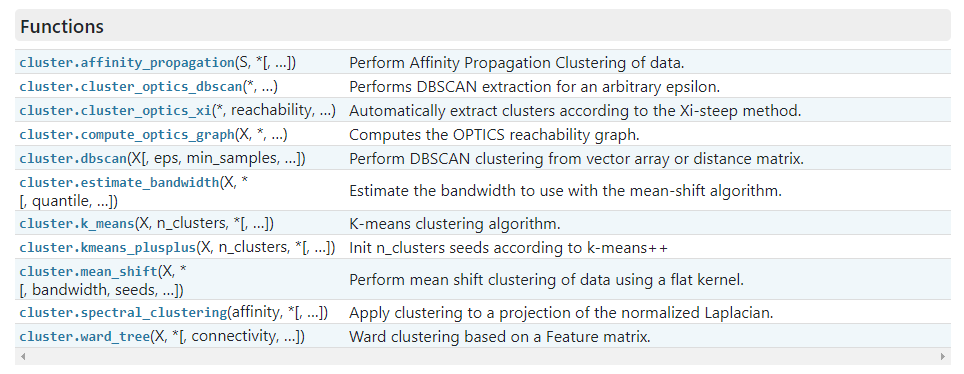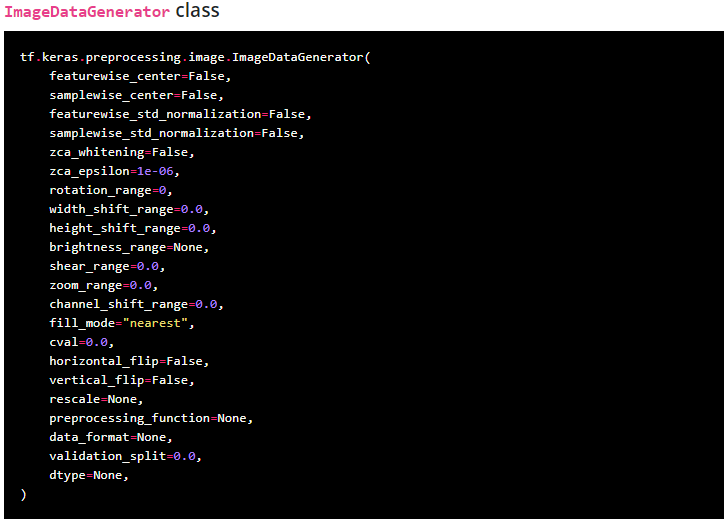
The Machine Learning (ML) market is estimated to reach USD 11.16 Billion by 2024. 57% of the business decision-makers say improving customer experience is one of the top artificial intelligence and machine learning use-cases in 2021. ML helps you streamline your enterprise operations and decision-making. You can leverage it for marketing personalization, fraud detection, precision medicine, machine health monitoring, and supply chain management. Use-cases are prominent in all industries and verticals. And one language that’s a fav amongst machine learning professionals is Python. It’s simple to code and build applications using Python. Thanks to the open-source communities, we’ve several free python machine learning libraries to build ridiculously simple to highly complex ML models. Read this insight to find out our top 5 choices of open-source python machine learning libraries in 2021.
1. Tensorflow
Why do we recommend the Tensorflow machine learning library in 2021?
- You can use TensorFlow for speech recognition, image or text classification, image segmentation, text generation, etcetera.
- It’s a platform-agnostic open-source machine learning library from Google’s Brain team and clocks 155k+ stars on GitHub.
- It performs really well in multi-GPU environments.
- You can deploy
- Tensorflow Lite ML model inferences in your android, iOS apps
- Tensorflow Js in browser Javascript environments
- Tensorflow library is written in C++, CUDA, and Python.
- Leading tech giants like ARM, Paypal, Twitter, Swisscom, Airbnb are using Tensorflow for their ML projects.
- Twitter used Tensorflow for the “Ranked Timeline” model so that tweeters don’t miss highly relevant updates.
- Swisscom used Tensorflow to develop customized machine learning models for classifying text and evaluating the intent of customer inquiries.
- Paypal uses Tensorflow, deep transfer learning, and generative modeling for fraud detection.
- Naver shopping leverages Tensorflow for automatic classification and categorization of millions of newly registered products to make it search-friendly.
Tensorflow is extensively documented but it has a steep learning curve and faces performance lags on single GPU environments.
Tensorflow Casestudies.
Read more on how you can leverage Tensorflow for your business.
2. PyTorch
Why do we recommend the PyTorch machine learning library in 2021?
- Using PyTorch you can perform Tensor computations and distribute computational work across GPU cores to accelerate things up.
- PyTorch is purely pythonic in its approach and blends well with NumPy, SciPy, and other python libraries.
- Data-parallelism, dynamic computational graphs, eager mode, graph mode, native ONNX support and reverse-mode auto-differentiation attributes of PyTorch makes it quite unique and gives a competitive edge over the likes of Tensorflow, Caffe etc., Other notable features of PyTorch:
- Off-the-shelf loss & optimizer functions
- Easy data loading mechanisms
- PyTorch Mobile (equivalent to TensorFlow Lite) can be used to carry out intelligent computations on the edge devices with android, iOS, or Linux based OS.
- TorchScript & TorchServe enables end-to-end workflow..
- PyTorch too can be run in the Cloud. Yes, you can use AWS Sagemaker, Alibaba Cloud, GCP, and Microsoft Azure for machine learning development using PyTorch.
- PyTorch has 47k+ stars on Github and is under active development by Facebook. It’s extensively documented. PyTorch vs Tensorflow machine learning library comparison is akin to ReactNative Vs Flutter mobile development framework comparison.
- Large enterprises like Salesforce, Apple, NVIDIA, Facebook, UDACITY, Stanford, Walmart and 87+ other organisations have been using PyTorch for their machine learning research and development.
In recent years, PyTorch has been rising in popularity among researchers with around more than 70% research-papers using Pytorch when compared with Tensorflow. But for JS developers Tensorflow has an edge over PyTorch because it’s easier to get started with TF JS if you’re a Javascript developer.
3. SciKitLearn

Why do we recommend the ScikitLearn machine learning library in 2021?
- Scikit Learn is another popular python machine learning library built on top of NumPy, SciPy and Matplotlib. It’s open-source and clocks 45k+ stars on Github.
- You can use SciKitLearn for
- Transforming text, image big-data using preprocessing and feature extraction algorithms to be used by ML models.
- Model selection using grid search and cross validation algorithms
- Dimensionality reduction using K-means, non-negative matrix factorization techniques.
- Spam detection, image recognition using random forest, nearest neighbors etcetera.
- Predictive analytics for drug response, stock prices using SVR
- Clustering similar objects into sets using mean shift, spectral clustering, etcetera. Example – customer segmentation.
- The users of Scikit Learn include JP Morgan, Spotify, Evernote, Booking, Aweber, OkCupid, Microsoft, Boston Consulting Group and others.
- ScikitLearn, undoubtedly, is one of the best ML frameworks for Python developers but it is not recommended for cluster based ML projects.
The fourth and fifth libraries on our list of top 5 python machine learning frameworks in 2021 are high level interfaces to the Tensorflow and PyTorch frameworks respectively.
4. Keras

Why do we recommend the Keras machine learning library in 2021?
- Keras is a high level interface to Tensorflow. It scored 51k+ stars on Github. Team Keras (currently developed/maintained by Tensorflow team) brands itself as “Deep Learning for Humans”. Basically, this means a user has to write less code compared to other libraries to perform the same tasks. Here is a guide to get started with writing training loops in Keras.
- It leverages the deployment capabilities of Tensorflow. You can deploy Keras models to run directly in browsers, mobile phones, and embedded devices. Additionally, you can also serve Keras models via APIs.
- It’s a highly exascale Machine learning library and natively supports Tensorflow’s distribution strategy API. It means it’s easy to run Keras machine learning models on large clusters of graphical processing units (GPUs) or entire tensor processing units (TPUs).
- Keras is highly preferred for quick prototyping, MVP development and is highly popular among Kaggle machine learning experts. But it is not preferred for low-level machine computations like Tensor products or convolutions.
- Companies like Delivery Hero, Haptik, Netflix, Yelp, Instakart, Uber, Square, Nasa, and 122 others have Keras in their tech stack.
5. PyTorch-Lightning
Why do we recommend the PyTorch-Lightning machine learning library in 2021?
- PyTorch has a huge community. About 400+ active contributors are looking after its development and it has garnered 13k+ stars on GitHub.
- Though PyTorch lightning is not as popular as others on the list, it’s definitely a library to try, especially because it’s a PyTorch wrapper. PyTorch itself is very easy and intuitive and PyTorch-Lightning makes it even more flexible, while keeping your code lightweight.
- Microsoft, NVIDIA, Allen AI, Intel Labs, Facebook Research are among active users of PyTorch-Lightning.
- Though it fits all ML projects, PyTorch Lightning is not a popular machine learning library when it comes to in-production large scale deployment. Here are some known use-cases:
- Training speech recognition models, NVIDIA NeMo
- Medical Imaging
- Computer Vision
Conclusion:

The journey to becoming an intelligent enterprise, implementing AIML to streamline your business operations and unlock new growth channels is not without challenges. In a survey, 49% of respondents see programming language and framework support as one of the major challenges associated with machine learning. So, it becomes very important that you keep yourself abreast with the latest machine learning frameworks and choose one that suits your enterprise’s tech pool. Feel free to contact-us for complex ML model developments or building intelligent applications for the web, mobile and embedded devices.
Outsource your machine learning requirements to Codewave’s experienced developers..
Frequently Asked Questions(FAQs)
1. What are some popular Python libraries for machine learning?
The most popular machine learning libraries in Python include TensorFlow, Keras, Scikit-learn, PyTorch, and scikit-image. These libraries are widely used in industry and academia for tasks such as deep learning, computer vision, natural language processing, and data analysis. They provide a wide range of pre-built functions and models that make it easy to get started with machine learning, while also being highly customizable for advanced users.
2. Can you explain the key features and functionality of the top Python libraries for machine learning?
It depends on the library, for example, sciKit learn provides a range of supervised and unsupervised learning algorithms, TensorFlow is a powerful open-source library for deep learning and Keras provides high-level neural networks API.
3. How do I choose the right library for my machine-learning project?
When choosing a machine learning library for a project, it is important to consider the following factors:
- The type of task you are trying to accomplish (e.g. classification, regression, clustering)
- The type of data you are working with (e.g. image, text, structured)
- The complexity of the model you need to build (e.g. simple vs. deep learning)
- The level of support and community available for the library.
- The ease of use and ability to integrate with other tools and libraries.
- The performance and scalability of the library.
4. Are there any notable differences between the various machine learning libraries for Python in terms of performance?
Yes, there are notable performance differences between the various machine-learning libraries for Python. These differences can be attributed to factors such as the specific algorithms implemented in each library, the level of optimization and parallelization, and the design of the library’s API.
Codewave is a design thinking led digital transformation company enabling organisations with playful innovation using AI & ML, IoT & Edge, AR, VR, Cloud, Blockchain, and Data.







